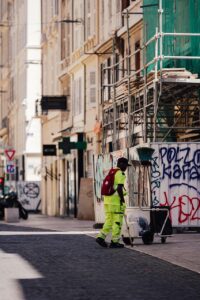Graffiti as Art
In Italy, street graffiti is more than just paint on walls—it’s a form of urban expression that breathes life into the cities. From Rome’s ancient alleyways to Naples’ bustling neighborhoods, vibrant murals and bold tags tell stories of local identity, passion, and resistance. Far from being an eyesore, much of this graffiti reflects a deep cultural undercurrent, connecting the past with the present. Artists often use walls as canvases to voice social commentary, celebrate local heroes, or reinterpret classical art in modern ways. In places like Bologna and Milan, street art has become an accepted and even celebrated part of the cityscape, attracting visitors eager to discover hidden masterpieces. For many, these works symbolize freedom, creativity, and the ever-evolving spirit of Italy’s youth. In a country where art has always played a central role, even graffiti becomes part of the cultural dialogue—coloring the streets with bold, rebellious beauty.
But it is Everywhere
But, for many tourists visiting Italy, the sight of graffiti—particularly tagging—can come as a surprise. Expecting pristine piazzas and untouched historic facades, travelers often find themselves puzzled by the scrawled names and symbols that cover shutters, train cars, and alley walls. At first glance, these markings may seem like vandalism, especially when contrasted with Italy’s world-renowned art and architecture. Some visitors feel disappointment, even frustration, seeing modern tags near Renaissance landmarks. However, as they spend more time in the cities, many begin to view the graffiti through a different lens. They recognize it as part of the urban texture, a raw expression of life that exists alongside the polished beauty. In certain neighborhoods, tourists even begin to photograph and appreciate the more creative tags and street pieces. While reactions vary, the experience often sparks conversation about art, public space, and the contrast between historical preservation and contemporary culture.





